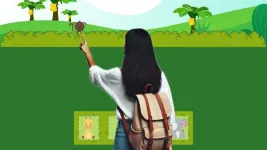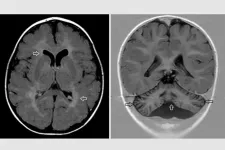(Press-News.org) An analysis of social media posts that mention food and beverage products finds that fast food restaurants and sugar sweetened beverages are the most common, with millions of posts reaching billions of users over the course of a year. The study, published in the open access journal PLOS Digital Health, highlights the sheer volume of content normalising unhealthy eating, and argues that policies are needed to protect young people in the digital food environment.
Obesity is a health challenge around the world and food environments, including in the digital space, can influence what people eat. Monique Potvin Kent of the University of Ottawa, and colleagues, investigated the frequency and reach of user generated social media posts in Canada in 2020. They identified the 40 food brands with the highest brand shares in Canada and searched for mentions of them on Twitter, Reddit, Tumblr and YouTube by general users of the sites.
Over the course of 2020, the brands were mentioned 16,851,990 times, reaching an estimated 42,244,995,156 users. The food categories with the most posts and reach were fast food restaurants with 60.5% of posts and 58.1% of total reach, and sugar sweetened beverages with 29.3% of posts and 37.9% of total reach. More men mentioned and were reached by the posts compared to women. Although the study did not separate out users by age, past evidence has shown that young people are heavy users of social media and has demonstrated high rates of exposure to these types of content.
With so many posts mentioning these food categories and certain brands, the authors believe the digital environment is contributing to the normalization of unhealthy food and beverage intake by youth. They argue that given the popularity of social media use by young people, this study supports the need for policies to protect this vulnerable group in the digital food environment.
############
In your coverage, please use this URL to provide access to the freely available article in PLOS Digital Health: https://journals.plos.org/digitalhealth/article?id=10.1371/journal.pdig.0000630
Citation: Potvin Kent M, Pritchard M, Mulligan C, Remedios L (2024) Normalizing junk food: The frequency and reach of posts related to food and beverage brands on social media. PLOS Digit Health 3(10): e0000630. https://doi.org/10.1371/journal.pdig.0000630
Author Countries: Canada
Funding: This work was supported by Heart and Stroke (funding to MPK). The funders had no role in study design, data collection and analysis, decision to publish, or preparation of the manuscript.
END
People with stronger autistic trails showed distinct exploration patterns and higher levels of persistence in a computer game, ultimately resulting in better performance than people with lower scores of autistic traits, according to a new study published this week in PLOS Computational Biology by Francesco Poli of Radboud Universiteit, the Netherlands, and colleagues.
Scientists know that individuals display curiosity and explore their environments to learn. How a person selects what they want to explore plays a pivotal role in how they learn and research has shown that exploration levels are highly variable across ...
Key takeaways
According to Bredt's rule, double bonds cannot exist at certain positions on organic molecules if the molecule's geometry deviates too far from what we learn in textbooks.
This rule has constrained chemists for a century.
A new paper in Science shows how to make molecules that violate Bredt’s rule, allowing chemists to find practical ways to make and use them in reactions.
UCLA chemists have found a big problem with a fundamental rule of organic chemistry that has been around for 100 years — it’s ...
A single enzyme fine-tunes red and yellow pigments in parrots’ polychromatic plumage, according to a new study. The findings reveal new insights into the molecular mechanisms underlying the evolution and display of color variation in one of nature’s most colorful birds. Colors play a central role in ecological adaptation and communication in the natural world. This is particularly true for birds, which are especially notable among animals for their wide range of vibrant plumage colors and patterns. Among birds, ...
By blindfolding Kuhl's pipistrelle bats and tracking their movements with novel GPS technology, researchers show that the tiny creatures can navigate over several kilometers using only echolocation. The findings highlight the animal’s ability to create and use detailed mental acoustic maps of their surroundings. Echolocating bats are known for their ability to nimbly avoid obstacles and catch tiny prey using only sound. However, echolocation is short-ranged and highly directional, allowing for the detection of large objects within only a few dozen meters, limiting its effectiveness for navigation compared to other senses, like vision. ...
Early-life sugar restriction – beginning in utero – can protect against diabetes and hypertension later in life, according to a new study leveraging data from post-World War II sugar rationing in the United Kingdom. The findings highlight critical long-term health benefits from reduced sugar intake during the first 1000 days of life. The first 1000 days from conception – from gestation until age 2 – is a critical period for long-term health. Poor diet during this window has been linked to negative health outcomes in adulthood. Despite dietary guidelines recommending zero added sugar in early life, high sugar exposure is ...
Indigenous burning practices in Australia once halved shrub cover, reducing available fuels and limiting wildfire intensity for thousands of years, but the removal of these practices following European colonization has led to an increase in the tinder that has fueled today’s catastrophic megafires, researchers report. The findings suggest that reintroducing cultural burning practices could provide a strategy to curb future fires. “Through detailed histories of Indigenous burning regimes across the world and Indigenous-led collaborations in contemporary wildfire management ...
Echolocating bats have been found to possess an acoustic cognitive map of their home range, enabling them to navigate over kilometer-scale distances using echolocation alone. This finding, recently published in Science, was demonstrated by researchers from the Max Planck Institute of Animal Behavior, the Cluster of Excellence Centre for the Advanced Study of Collective Behaviour at the University of Konstanz Germany, Tel Aviv University, and the Hebrew University of Jerusalem, Israel.
Would you be able to instantly recognize ...
Most people who visit a doctor when they feel unwell seek a diagnosis and a treatment plan. But for some 30 million Americans with rare diseases, their symptoms don’t match well-known disease patterns, sending families on diagnostic odysseys that can last years or even lifetimes.
But a cross-disciplinary team of researchers and physicians from Washington University School of Medicine in St. Louis and colleagues from around the world has solved the mystery of a child with a rare genetic illness that did not fit any known disease. The team found a link between the child’s neurological symptoms and a genetic change that affects how proteins ...
Research led by the University of Michigan has provided compelling evidence that could solve a fundamental mystery in the makeup of fibrils that play a role in Alzheimer's, Parkinson's and other neurodegenerative diseases.
"We've seen that patients have these fibril structures in their brains for a long time now," said Ursula Jakob, senior author of the new study. "But the questions are what do these fibrils do? What is their role in disease? And, most importantly, can we do something to get rid of them if they are responsible for these devastating diseases?"
Although the new finding does not explicitly answer those questions, it may provide a missing ...
Notes to editors
For further information please contact:
Karen Nower
Media Office, Royal Society of Medicine
M: +44 (0)7587 084402
E: media@rsm.ac.uk
The Journal of the Royal Society of Medicine (JRSM) has been ranked as one of the world’s top ten general medicine journals for the first time.
Being placed tenth out of 329 ‘general and internal medicine’ titles in Clarivate’s 2023 Journal Citation Reports (JCR), this is JRSM’s highest ever ranking to date, having risen yearly ...



